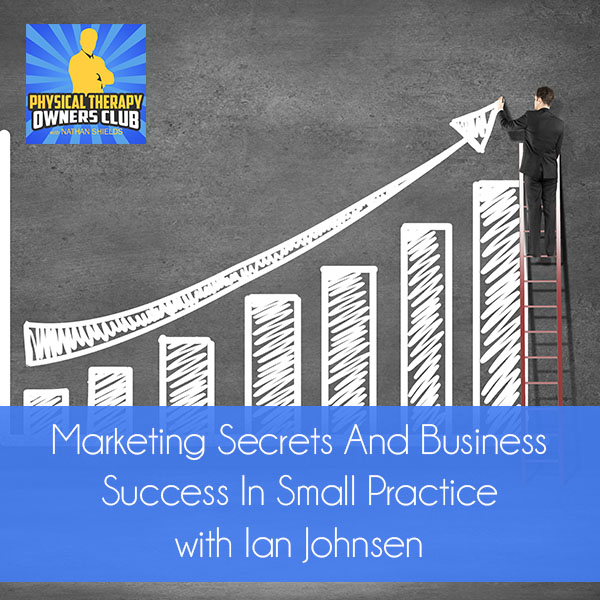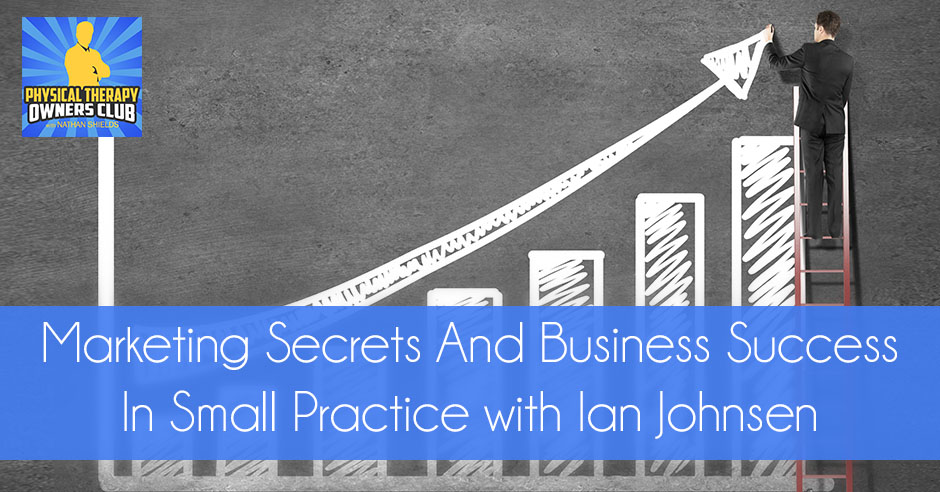
Ian Johnsen, PT, MSPT has been a success in his small private practice in the Seattle area and, like me, decided to launch a podcast and introduce more private practice owners to the resources and success stories that are out there. So I decided to have a conversation with him to learn a little bit more about him and what he’s doing to be so successful. He was kind enough to share a couple of his marketing secrets, which any practice could benefit from right away! He also shares some of the resources that are guiding him along the way to success. Funny thing, there are a number of resources that are the same ones we use and espouse here at PTOClub! Have you used the same ones?
—
Listen to the podcast here:
Marketing Secrets And Business Success In Small Practice with Ian Johnsen
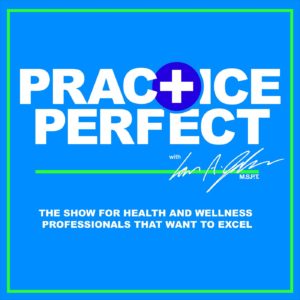
On this episode, I get the opportunity to interview a fellow podcaster, Ian Johnsen who hosts a podcast called Practice Perfect. He interviews healthcare professionals, especially healthcare or private practice owners along the same lines as what I’m doing. I took the opportunity to sit down and talk with him. This is more of a conversation that is rather free-flowing with Ian. We talked a little bit about his podcast and what got him into that. We also talked about some of the struggles and success that he’s seen as a small physical therapy practice owner. We also talked about some of the books that have been influential for him as a practice owner. We also talked about a couple of secrets that he’s used with the marketing techniques that have been beneficial for him in getting patients that are higher reimbursing. Also, focusing his marketing efforts and thus improving his efficiency and productivity in this marketing efforts. We talked about some of the secrets that he’s used in his practice. Hopefully, you can take a little bit from what Ian has learned and also relate and maybe implement some of the things that we talked about into your own professional experience.
—
What made you decide to do it?
Frustration, more than anything. The whole issue with not being educated on running a business. That was it for me. This was something I wanted to put out for everybody that’s in the same boat that I am so that they can get educated along the way. It’s a big give back in the selfish side. I get to meet cool people and build connections.
I want to know a little bit about your story, where you’re coming from and what you’re doing now. Also a little bit about what you learned from the podcast and whatnot. What got you started into PT and where are you at now?
I grew up in Washington up in Everett. My dad was a mailman. I lived with him and my stepmom once he remarried. He was a nighttime bartender. Money was a bit tight up in the north end. I watched my dad go to work every single day and grind it out at 5:00 AM and make it back home at 5:00 PM and crash on the couch after making the kids dinner. He put the time to help the family survive. At fourteen years old, I’m thinking, “I don’t want that life at all.” I went after the idea of finding something that would hopefully pay well. In my mind, that was medicine. I was heavy into playing soccer and running cross-country and that stuff. I wanted something in sports and medicine combined. I went that route. I went to the military because I didn’t have college money. I jumped to the military. I got the four years in. I started taking a couple of classes while in the military and then I used that college fund once I got out.
I discovered that sports medicine for me wasn’t a thing that I could wrap around. It didn’t exist in where I was searching for. Once I got it, it meant that I would be a doctor and then have more schooling on top of that, probably become a surgeon and distributing medications. It wasn’t what I wanted to do. I want to heal people naturally. This was the field for me and it was a step-by-step process from there. I went to a two-year college. I went to Shoreline Community College. I got my Associate’s in Science. I hopped up to the four-year school, which is called Western Washington here. It was a lovely school with a nice Exercise Science Program, lots of kinesiologies, biomechanics and all that good stuff. In there, I found Kathy Knutzen who was my counselor and program director. She suggested moving on towards either chiropractic or PT school. We made the format of the classes to be such that I could do that. When I found my school, which was Regis University out in Colorado. I went there and I fell in love with their program. I highly recommend everybody go out to that one.

Your story is not all that different from mine. I grew up in a middle-class neighborhood but money was tight or at least from my dad’s point of view. He always complained about, “We don’t have money for that.” That was a common refrain. I had uncles that were in healthcare. I saw, “This guy has some financial stability and my cousins have things that they want and can play with and they have the freedom to do that.” I started moving towards healthcare as well and I then came across Physical Therapy Owners as I was doing my undergrad. These guys had decent homes and they provided for their families. They didn’t have to take the MCAT and they didn’t have to go through all the schooling that an MD did. I was like, “That’s for me.”
As I volunteered, I had an adrenaline rush after adrenaline rush every time I volunteered at these private practices. I knew this is for me and I was developing relationships with some of the people that I would meet once or twice a week, however often I volunteered. I thought, “There’s no way in the medical field that you can develop a personal relationship like that and get them better in a rather quick manner and not have to do all the medical schooling and MCAT testing. I thought that was for me and that’s how I got into it. It all stemmed from the same thing, looking for some stability in my life and then things worked from there.
The PT practice is not always super easy. In 2006, I was in some form of the practice. This was back when I was getting my feet wet. I went from the hospital. I stayed in a hospital setting for a year and I got some good mentorship from the folks that were there skill-wise. There was a group of PTs, probably eight of them. I learned a lot of cool things there. Then I transferred out to the private practice realm and found a guy that was doing what I thought I wanted, which was to have a small clinic with himself being the primary owner-operator. I learned as much as I possibly could from that guy financially and from the billing side. The good and the bad because there is always some bad in there too.
When you write down the fears that you have and what those worst case scenarios could look like, it dissipates. Click To TweetThen you decided to strike out on your own and since that time, have you found resources or have reached out to consultants or coaches to help you along?
There are always going to be mentors and coaches in the process. I don’t think you can get through this without that. It’s part of why the podcast exists at this point so that we can mentor people along the way. I’m not an expert yet. I’m still struggling and when I grow, everybody else can hear it and they can grow with it too hopefully.
One of the reasons why I started the podcast is I didn’t see it back in the day. I opened up my clinic in 2002. At that time, I wasn’t seeing the resources or they didn’t seem readily available whereas they seemingly do so now. I’ve interviewed a number of them and talked to a few people and have had some of my own coaches since that time. I wish I had gone back and I would tell myself nowadays to get some coaching because like you said, we don’t do this stuff. We are physical therapists who happen to own a business. Getting some of that insight from somebody can always help along the way. Have you followed any particular books or theories or coaches along your path?
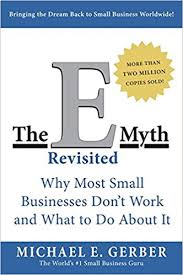
One of the guys that’s been with me for quite some time now, his name is Michael O’Neal. He’s a podcaster. He does Solopreneur Hour, a one-on-one coaching for solos. He’s done a good job initially at pushing me forward and helping me with marketing ideas and marketing strategies. I’m playing with the focus of where I want my best clients to come from, finding who that best client is and building your avatar. Digital marketing is definitely a piece of it. Mentoring me through the podcast portion too to get that going is good. Other business mentors also. I learned a lot about how to build a practice in terms of where do new patients come from and acquiring those guys and then building the systems around the business. It partially comes from people teaching me, but then partially from some of the books that Mike O’Neal had recommended. I always had six books and I can never remember all of them. One of my favorites is still simply working towards systematizing everything in your business. That book was called The E-Myth Revisited. It’s a super easy read. A nice audio book and I read that first and then I read Rich Dad Poor Dad. Get both of those books. Get Think and Grow Rich to get your mindset framed. Then you can start to develop. I love The 4-Hour Workweek. That thing was genius and funny. It could be out-of-date a little bit, but it got my mental juices flowing on other things I could put in place besides doing day-to-day practice.
I did an episode of The Best Business Books that are most often referenced between me and my guests and it’s a lot of those same ones except The 4-Hour Workweek and I should have mentioned that one. For sure, The E-Myth, Rich Dad Poor Dad, Think and Grow Rich, Good to Great by Jim Collins and Verne Harnish’s two books, Mastering the Rockefeller Habits and Scaling Up. A lot of it between all of those books is to get clear on what your mission, vision or purpose is and shift your mindset to making this a business and not a job and systematize. To get everything in your head down on paper so that it ends up being a business that can run without you, right?
Exactly and be sure that you’re following your passion. If you’re not passionate about what you’re doing, you’re in big trouble.
What are you doing now in your clinic? What’s your size? What are some of your goals? Where are you at?
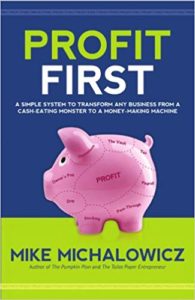
Prior to that, I want to give you one more book to check out. I’m digging into Profit First. The cool thing about this is that it’s basic but powerful in terms of helping you organize your accounts properly. Instead of running everything out of one account, you parse it into five accounts. You have an income account, you’ve got a tax account, you’ve got the owner’s income account and the profit account. He’s big on making sure you take profit every single time or a couple times a month when the deposits all show up.
We talked about that a little bit and it blew my mind on an episode that I did with a guy named Christopher Music. He’s a financial advisor for a lot of private practitioners. One of his first rules is set aside 10% at least every month. Simply just set it aside. The 10% goes to you as the owner every month and he said you make your business work off the rest. Once you do that and get used to it, you find ways to pay bills or increase gross revenues if you have to. If it does not turn out at least that much, then it’s not worth it.
This is similar. It’s all these separate accounts we talked about and then you set an overall big-time goal of what those percentages should look like. Then you start in smaller versions of that and just start setting aside all those monies and all the different accounts that you’ve set. You don’t have to worry about your taxes.
I’ll have to check it out.
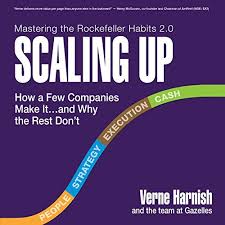
Definitely do that and I hope everybody does because it’s changing things rapidly for my group. In terms of what I’m up to and what the clinic’s doing, the size of the clinic and all that, I’m still not that big. I’ve got a second PT with me and she’s part-time. I could probably handle her full-time. I’m busting my butt internally at the same time. I’m doing a full load. I’m there from 7:00 to 5:00 typically. I’ve been getting out around 3:00 or 4:00 to get the kids off to dance classes and do podcasts and different things that I want to work on. I’ve got about three equivalent full-time aides. We work in batches or in small groups. Each PT typically has one to two aides working with them. We spin it a little differently. We don’t even have a receptionist, which I’m about to change. It’s getting a little bit challenging at times as we get busier. What I wanted was not to have Marge sitting on the front desk, playing with her thumbs and not being effective. I’m learning that I can make that person accountable and use them in a much better way than what I’ve seen used in different clinics.
That front desk person and that can be the boon or the bane to clinic, they are so huge. They’re not practitioners but they are the first and the last person that everyone sees coming into your clinic. If they’re not doing well, then you guys will suffer. If they are good, they are good and they end up being better than you sometimes getting people into the door. It’s a huge role in the clinics and it’s a huge hire. They’ve got to be aligned with you and they’ve got to have energy and they’ve got to be part salesman to make sure they come in three times a week. They’ve got to be courageous to collect the copays and the deductibles and all that stuff and be anxious to make calls. It’s a certain personality set.
They have to be so personable. They’ve got to have interpersonal skills locked out and you’ve got to identify that magical person, almost like at Disneyland person right off the bat.

That can be a tough hire. You want to make sure their value aligns but they can be huge. To have someone like that that’s making the calls and scheduling patients and stuff, if you can get that off of your plate, then that’s a huge bonus for you as well. It improves your productivity. Was it really hard for you to bring on that second physical therapist? Was that a difficult jump?
I was scared out of my mind. You’re talking dollars at that point. You’re looking at a big cost jump right out of my pocket. When you hire them on, you’re already trucking it, whatever your max amount of client load is. I’m going to bring you on and you get half of that and then my potential goes down. You have to have it ready to go that you can crank up the volume of clients as you bring that person in and have the staff and all the support to handle that. If you don’t get that right, it’s tough.
That’s where you have to find the right physical therapist that’s value-aligned and treats patients at least similarly. Maybe they could be compatible with your treatment skills. Someone that has a similar mindset at least. Now, you’re actually managing somebody. That’s a different story.
I found the perfect candidate. This woman was an aide that worked for my old boss and she went to PT school. As she’s going through PT school, she’s looking for a place to intern. We interviewed her first. Then she comes on and she has a lot of the same skillset that I have. A lot of the same theory, it’s a beautiful balance. We work well together and get patients better quickly.
It’s a necessary step. I’m sure you felt the push and pull. It sucks to take that money out of your pocket, but at the same time you know that if you’re going to grow and really become an owner, that you need to bring on other people in and systematize that process.
Once you have that person and they’re rolling and they’re doing their job and they’re doing all the notes that sometimes you don’t get completed in time, you become more profitable because of that. Because of the fact that you can get behind the scenes and work the processes harder and make sure the front desk is doing what they need and then things ramp up.
That’s a huge step for any practice. Me personally, I recognize the same thing. After hiring that first person and getting them on board, then it becomes a lot easier to bring on other people because you’re not feeling the financial pinch as much. Your revenues are increasing. You’ve been through the fire and it will work out somehow. You’re not going to go bankrupt after all and lose your house. You’re going to make it. It’s also a necessary step to push you into working on your business instead of in your business.
I’m going to step back to those financial scares and not getting your mortgage payment paid this month and in all the big scary things that happen. They’ll work out. They do. You have to figure out how to make them work out and not be scared.
I listened to Tim Ferriss’ podcast where he talks about managing fears like that and he was talking to another business owner who would sit down when they have those anxious moments about making significant changes in their businesses. To consider the real, maybe even the imagined worst possible scenarios that could happen and then work your way backwards like, “Worst possible scenario is a go bankrupt and lose the clinic, then what?” “I’ll find another job. There’s always a demand for physical therapists.” “Would that be all that horrible?” It would be a blow to the pride, but financially we could still make it. There are some ways that you can work your way out of that. Did you do anything like that as you dealt with your anxieties regarding bringing people on?
That was part of that The 4-Hour Workweek book too. I went through that entire exercise. This is what is out there and this is what could happen if I screw it all up and if it does get all screwed up, fine. This is where we live for the moment. Then we reorganized and then push again. You write down those fears that you have and what those worst-case scenarios could look like. It dissipates. It’s an interesting exercise.

Instead of letting your imagination run amok, you can confront the fears head on and come to terms with it right then instead of brewing on it for days, weeks, months at a time and say, “We’re going to do this. It’s the best decision I’m making for my business and it’s the best decision that I can make with the information that I have at this time. I’m going to move forward with it knowing that there is a possibility that things could go wrong, but I can handle whatever goes wrong. This is how I will handle it and then move forward. How long has that physical therapist been with you?
I believe she is going on the second year right now. It’s coming on two pretty quickly.
Is there quite a bit of competition where you’re at for physical therapy clinics and for physical therapists?
Yes, it’s a pretty affluent city. Bellevue, Washington is home to Microsoft and you’ve got Expedia. There are a lot of good paying clients that will come through the door, but there are a lot of clinics too. We’ve got ATI Physical Therapy that bought up nineteen clinics. There’s a group called RET, which is up to 23 clinics strong. There are plenty of big boys out here. There are not a lot of one-off shops for PTs anymore. I don’t know a ton of them. I can count on one hand how many they probably are. There are probably more hiding out there. I feel like there’s quite a bit of competition but there are niches for everybody as well.
What have you done to separate yourself or have you done anything in particular?
One of my favorite niches is to get in with chiropractors for what I call the finishing touches of treatment. That’s a strategy that might work for others and that means not looking at them as enemies but looking at them as colleagues that need some help in trying to wrap up cases. I go in and I have a lunch meeting with somebody we specifically talk about that, “I don’t want to steal your client. You can have them as a forever patient, but I do want to make sure that as you manipulate and will identify people that are weak. I know that you don’t have the time to totally strengthen them unless you’ve got somebody in house doing therapy and exercise. Let me have him for four weeks. I will set them up on a home program and then you can get that case closed and get paid. We’ll finalized and make it stronger.” Those types of words are helpful for getting some confidence in what I do so they can understand it. I’m not trying to steal from them. I’m trying to help him out. On the flip side of that, I get some high-paying clients. Like the Tim Ferriss’ 80/20 rule, if I can get in and get my best paying clients first, then that takes the financial stress off the company.
You’ve seen a lot of success from that. That’s a niche that I haven’t heard of much.
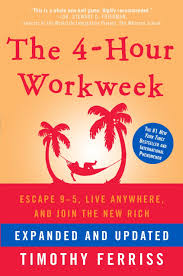
That ebbs and flows so you really have to stay on top of it like anything. Those relationships fall apart at times if you don’t stay on them. It is an effective thing and that could help small private practice groups quite a bit. If I can get somebody in a motor vehicle for six visits straight, the visit is $220 a pop, then why am I going to concentrate on lower-cost clients coming from a doctor that’s hard to get into and talk to when I can easily make a lunch appointment with a chiropractor?
Do you find yourself referring back to them?
A lot of them want that, but when you go in and let them know upfront how it typically works, there isn’t a lot of that that happens. If they can use it as an adjunct and not expect that and if I can queue them up for that, it’s okay. There have been a couple in that meeting that are starting to ask me and I say, “If you’ve got a massage therapist on staff, if you’ve got something I can refer into, then I will send you my clients that I think need a bigger adjustment.” In Washington State, it’s interesting. We’ve got the right to manipulations in the State. In order to be able to do them, you have to have some advanced training on top of the PT classes we’ve already had. I believe almost internship with somebody that’s a manipulator. You might go with the chiropractor to get that certification. I could be a little bit wrong on some of that. I haven’t researched because I didn’t care to. I’ve been taking the approach that I’m not well-versed in doing manipulations anymore. I was great out of school. I don’t do them so I can send them to them and I’m okay with that if I find the right chiro.
A lot of people could use that because I’m the same way. I don’t necessarily view chiropractors as competition, but we could work in conjunction with each other quite a bit on a lot of these patients. Tell me a little bit about Mike O’Neal. Is he a physical therapist or is he a simply a coach that you used?
He’s a podcaster. He hosts a podcast that’s called the Solopreneur Hour. He’s got some great tech info in there for everybody. It’s some good courses that he’s developed and good strategies too. He does help solopreneurs. The guys that are going out on their own trying to start things up. I found him because I was listening to podcasts. One of them that I listen to is Entrepreneur on Fire. That’s John Lee Dumas’. The first time I heard that thing, I’m like, “There are people out there like me. This is great.”
Entrepreneur on Fire is what lit me up to podcasts as well.
It’s done that for a lot of people. A lot of people went out and copied it. I love the way you’re doing it here. The real conversations. That’s how I play it too.
Like the 80/20 rule, if you can get in and get your best-paying clients first, then that takes the financial stress off the company. Click To TweetYou talked with Michael O’Neal that you established an avatar. Can you talk a little bit about that and what your avatar is for your clientele? The first time I heard about an avatar for my clinic or for my business was through Paul Gough’s Podcast. He talked about his avatar and his ideal client. He mentioned he detailed it all out about who he wanted to see and how he’s been successful. Tell me a little bit about your take on avatars and what yours is.
In meeting with Michael, it was developing a fitness program that I’d come up with called LEVO Fitness and it’s somewhat in stasis right now. We were really trying to focus in on who would be the best client for that. You go through everything. You’re going through your demographics, even the gender. You’re looking at his avatar. Her name was Mary. She’s 50 years old. She stays at home. She has kids there. Their house has $200,000 in income. It was very similar in what you’re trying to accomplish with this and then your messaging just becomes to that person. Inevitably, you’re going to get a whole bunch of surrounding people that will pay attention and come in. It may not always be Mary at 50. It’s going to be a Susan who’s 25 that really liked the exercise program, whomever.
For the PT clinic, it’s a little bit interesting because who are we marketing to? I can set an Avatar for a woman at that age group, but that’s not where the majority of my patients come from yet. All are cash based in England. We have to directly market to those people in the community and we can do that, but it isn’t very effective yet. ClickFunnels can help with that and Facebook and Instagram and all that kind of stuff. We’re getting there but right now we’re still really reliant on a referral, and that referral will either come from a patient or you’re getting it from a physician. Who is the best referring source is what we have to look at.
That’s huge especially when you’re considering your message, you want to go directly to that avatar. You want to go directly to that person so that you can get through to them. Ideally, it’s the person that’s handling the finances and in-charge of where these referrals go and whether that’s the doctor or whether that’s the mother or the father of the household at a certain age. Someone who makes the decisions.
In the case as you’re asking me about my avatar, I would say that it’s a physician or chiropractor and there are two avatars. There’s that chiropractor I talked about that needs those finishing touches to those cases and then there’s the physician that has a lot of low-back patients or pelvic alignment patients. If I could find those particular people and show them my results, then I can start taking those referrals. It really becomes a message of what I can do for their clients and how quickly I can get them better. I’ll never go to a doctor and be like, “I’m so good at doing this and so good at doing that.” I’m not going to give them my skillset and my resume and beg them for an appointment. I’m going to show them results from the words of the patients. Those testimonials and bring them in and show them if we need to and try to convince them to try us out and just give them results and given great communication.
There’s a physical therapist owner here in my town who I work closely with. He decided to narrow down his marketing to physicians quite a bit. Most of the physical therapy owners, they’re going to market to every physician that’s out there. Anybody with a pulse that could refer a patient, we’re going to market to them. He decided, “Forget it. The orthopedic surgeons are too finicky and a lot of them are taking physical therapy in house. I’m going to focus my marketing efforts on the family practitioners and the internal medicine guys in my area and talk to them about what’s important to them.” He says by doing so, by actually scaling back on his marketing and focusing a little bit more, he’s exceeded his revenues this year by at least 20% to 30% and you wouldn’t expect that.
Maybe after you’ve been in it for a while, you would. It makes complete sense. I stopped marketing to orthopedic surgeons. They have their own staff and I’m not interested in that anymore. Family physicians and internal guys, definitely. To niche down, take it a step further and create a relationship with five of them. These physicians and nurse practitioners and everybody, they’re seeing a caseload of 30,000 people a year. You need to survive as a PT independently five visits and five new evals a week and then you learn how to keep in front of those clients through the years and all of a sudden, you have repeat customers over the years.
Tell me a little bit about your podcast. That’s how I came across you. I was intrigued by a fellow physical therapy podcaster. Tell me what your focus is on at Practice Perfect.
It’s very similar to what you’re doing in the PT realm but I had a bigger, wider scope looking at practitioners as a whole. Definitely, I’m going to be a little bit more PT-biased but I’m interviewing medical people from all the spectrums. I’m getting doctors. I’ve interviewed naturopaths, acupuncturist, some marketing people and some financial folks. Anybody that can help us push our businesses forward and grow in a much smarter way. That’s the main thing with that and we went over why it exists.
Relationships fall apart at times if you don't stay on top of them. Click To TweetAnybody that can utilize the people that we bring to them or the ideas that we bring to them via podcasts, for me, it’s simply to provide that resource. There are other practitioners, private practice owners that have gone through some of the same things that were going through or have gone through. You can learn from them. You don’t have to figure it all out by yourself, whether they’re programs offered by PPS through the APTA or consultants and coaches that I interview or books like you mentioned. There are ways to get the information that you need to be successful business owners.
I’ve talked to so many different practitioners already and almost every time I talked to somebody, we’ve got another idea from another resource. That person might be an acupuncturist and they’ve had this amazing experience where they’re selling these supplements out of their clinic. They realized that they can’t take time away from their day to fill these things and put them here and get clinic interruptions. Then they have to walk away from their patient and set these things up and all of a sudden, they’ve decided to open an online store. There are all these cool ideas flowing from different practitioners. I’m even thinking me telling you guys about directing your focus towards some chiropractors for a little bit to see if you get a $220 visit instead of an $85 per hour visit. Those are real value for us when we have these discussions and what we’re looking for is even one little tip that makes you light a fire and make a difference for people. It’s like doing PT. You made somebody better. I made that arm better. That shoulders moving 90 degrees in every direction. The same thing for these practices. If we get the practices up in any way and see measurable improvement and somebody writes me a message via email that says, “I implemented that and it worked.”
If you hear something positive coming from a listener, nothing beats that. It’s like getting a patient better. How can people listen to your podcast or if they wanted to reach out to you, how do they do that?
Just head over to iTunes, Google Play and Stitcher Radio. It’s where we’re at. If you don’t have that on your phone, download it now and do a search for Practice Perfect. I’m on Instagram as @PracticePerfect. Facebook is @PracticeCast. I’m starting Facebook groups as well and trying to get listeners involved in those groups so that we can have conversations within those things too. If you’re interested in that, you can email me at Ian@PracticePerfect.net. I’m open to any kind of questions you may have. Those are all the ways to get to me quickly.
Systematizing your processes is the difference between owning a job and owning a business. Click To TweetThanks for sitting down with me. It was great to hear about your story and we’re on the same page as to what we’re trying to do to help other private practice owners. I don’t think there can be enough of us out there to guide and steer and be resources for people, especially in the PT world. I don’t think there’s been enough focus on the business aspect of the physical therapy profession personally. People like you help out in that regard.
We’re going to help out a lot. This is something that’s been missing and hopefully people take notes and see that it’s a necessity. Maybe we can actually get some change to happen within some of our schooling systems.
More needs to be done from the schooling standpoint. I know more can be done from the APTA standpoint. There’s a lot of room for growth and that’s cool to see. There’s a very bright future for us as we continue to focus on the importance independently on physical therapists.
I’ve got the main podcast which is like that and I dropped a few episodes and I’m doing this thing called the Daily Drive now. I hit record on my phone in the car, on the drive home from a day in the clinic. You get to hear some of the real time struggles that are happening in the clinic to me. It’s a nice little extra piece for people to listen to you. I’ve got ranging from financial crisis to somebody’s not showing up on time and how to deal with that person, reviews and all the nitty-gritty of what’s going on in the daily life of a practice owner.
That sounds cool because I’ve always thought that a sitcom based on a physical therapy practice would go pretty well because we see some pretty crazy stories out there. I’ll definitely take a listen to that. I’ll check it out. Thanks for your time. I appreciate it.
Important Links:
- http://PracticepPerfect.net/
- Practice Perfect
- Solopreneur Hour
- The E-Myth Revisited
- Rich Dad Poor Dad
- Think and Grow Rich
- The 4-Hour Workweek
- The Best Business Books – previous episode
- Good to Great
- Mastering the Rockefeller Habits
- Scaling Up
- Profit First
- Christopher Music – previous episode
- Entrepreneur on Fire
- Paul Gough’s Podcast
- Practice Perfect on iTunes
- Practice Perfect on Stitcher Radio
- @PracticePerfect on Instagram
- @PracticeCast on Facebook
- Ian@PracticePerfect.net
About Ian Johnsen
 From Ian’s Practice Perfect podcast iTunes page, it says:
From Ian’s Practice Perfect podcast iTunes page, it says:
“How much Business Education did you get in your Degree Program? Struggling to make it to the next level? Just starting or trying to expand your business? Build your “Perfect Practice” in a fraction of the time. I didn’t start to find success until I started listening to business shows like Entrepreneur on Fire and the SoloHour. I cried the first time I realized there were others going through the same struggles. This show exists because I wanted to hear from people in similar industries that are CRUSHING it, to learn from them and to build a better future.”
Listen to the podcast and Ian will give you rundown of what he’s all about.
